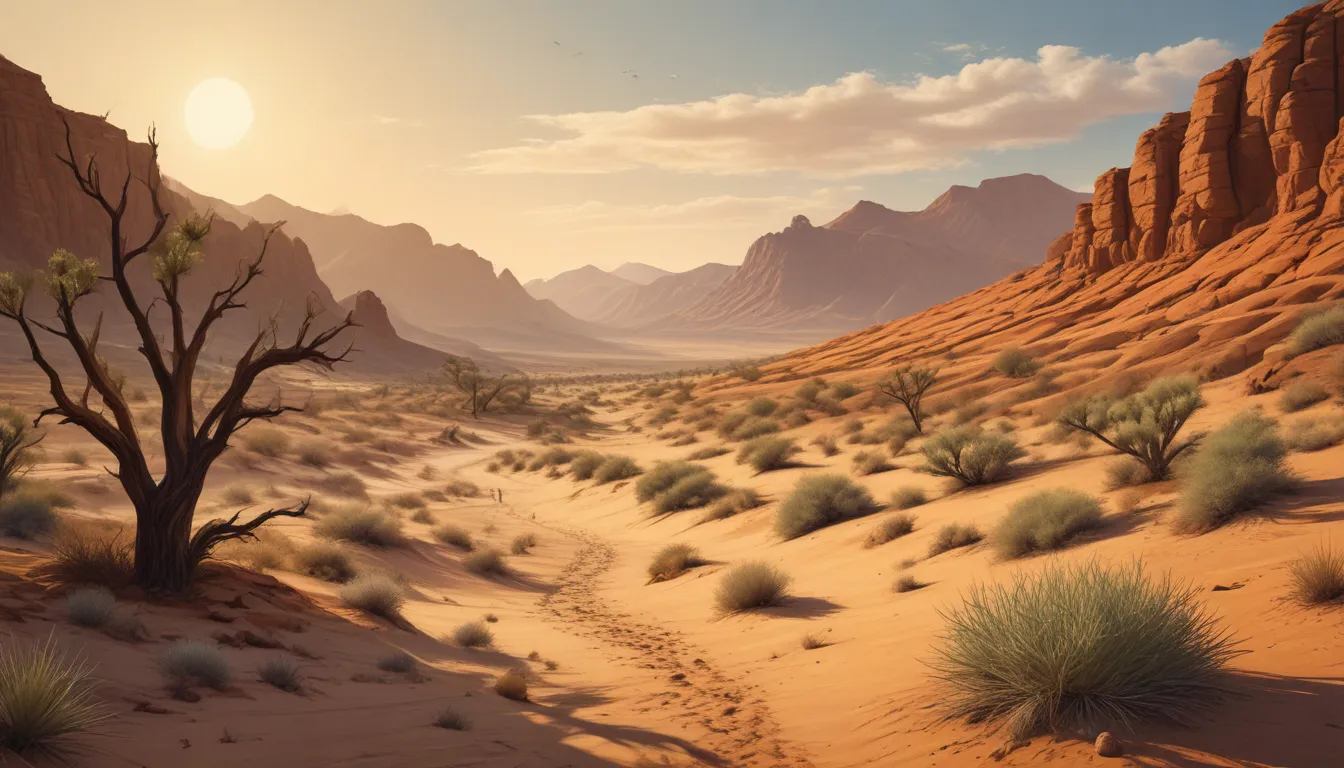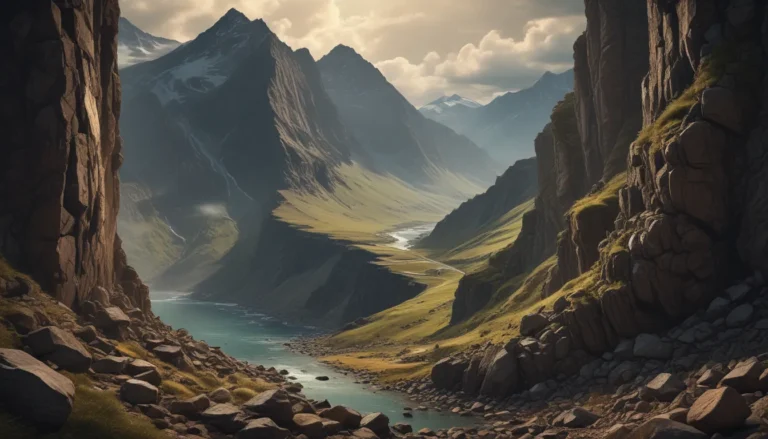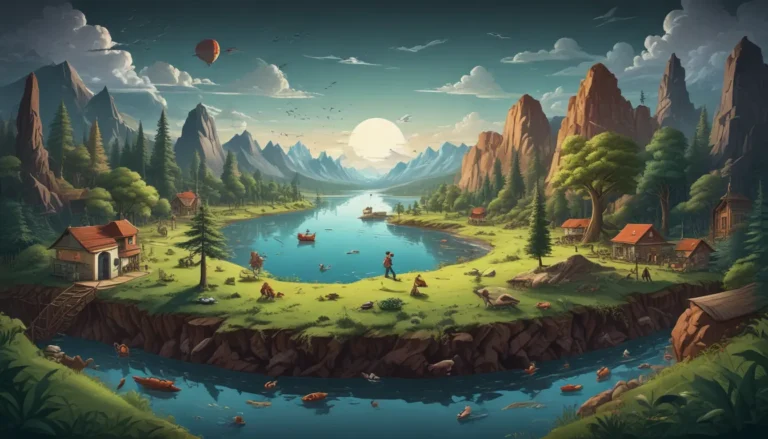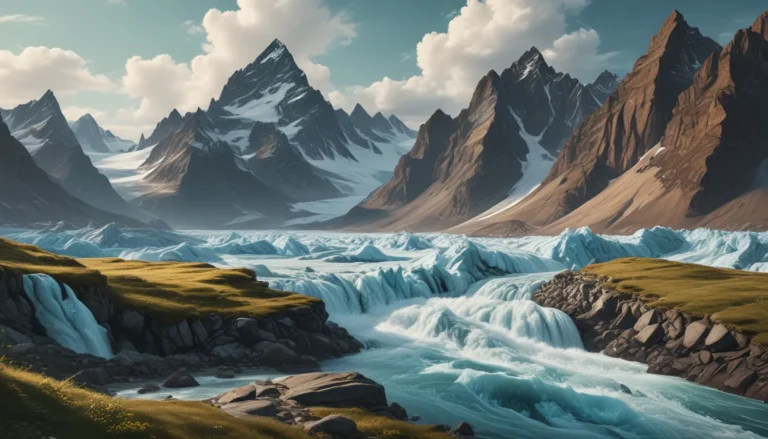A Note About Images: The images used in our articles are for illustration purposes only and may not exactly match the content. They are meant to engage readers, but the text should be relied upon for accurate information.
Welcome to the intriguing world of arid climates, where extreme temperatures, breathtaking landscapes, and unique adaptations come together to create a fascinating environment. From the scorching Sahara Desert to the stunning Sonoran Desert, these regions offer a wealth of wonders waiting to be discovered. In this article, we will delve into 14 astonishing facts about arid climates that showcase the resilience of life in these harsh environments. Join us on this journey to uncover the diverse and captivating characteristics of these extraordinary regions.
Unveiling the Mysteries of Arid Climates
Arid climates, also known as desert climates, are defined by their scarcity of rainfall and dry conditions. Despite their inhospitable reputation, these regions host a variety of fascinating features and adaptations that highlight the incredible resilience of life. Let’s embark on a discovery of the unique traits and challenges that make arid climates such intriguing ecosystems to explore.
Extreme Temperature Fluctuations
One of the hallmark characteristics of arid climates is the significant temperature swings experienced in these regions. From scorching hot days to freezing cold nights, the lack of moisture in the air results in rapid cooling once the sun sets. This phenomenon creates a challenging environment for both plants and animals to thrive.
Desertification: A Growing Concern
Desertification, the process by which fertile land transforms into arid desert due to climatic changes or human activities, poses a significant threat to many regions worldwide. Factors such as deforestation and overgrazing contribute to the gradual degradation of once-vibrant ecosystems, highlighting the delicate balance of arid climates.
Magnificent Sand Dunes
A striking feature of arid climates is the presence of majestic sand dunes sculpted by the relentless forces of wind and time. These towering formations create a visually captivating landscape that draws visitors from around the globe, offering a glimpse into the natural beauty of these unique environments.
Wildlife Adaptations: Nature’s Resilience
Animals in arid climates have evolved remarkable adaptations to survive the harsh conditions. From the kangaroo rat’s ability to extract water from metabolic processes to the camel’s hump storing fat for energy and insulation, these creatures exhibit extraordinary resilience in the face of adversity, showcasing the wonders of evolution.
Oasis Life: A Refuge in the Desert
Oases, small havens of lush vegetation and water nestled amidst arid landscapes, hold a vital role in supporting both human settlements and biodiversity. These natural sanctuaries serve as essential sources of life in an otherwise harsh environment, underscoring the intricate balance between water and life in arid climates.
Ancient Cultures: Masters of Adaptation
Throughout history, many ancient civilizations thrived in arid climates, utilizing advanced irrigation systems to cultivate crops and sustain their communities. From the Indus Valley Civilization in South Asia to the Ancient Egyptians along the Nile River, these societies exemplified the resilience and ingenuity of human adaptation to challenging environments.
Water Conservation: Nurturing Life in the Desert
In arid climates, water conservation is paramount for human survival and ecosystem health. Communities have developed innovative techniques such as rainwater harvesting and drip irrigation systems to maximize the efficient use of limited water resources, highlighting the importance of sustainable water management practices.
Endangered Species: Guardians of the Desert
Arid climates are home to several endangered species uniquely adapted to thrive in these challenging environments. From the elusive Arabian Oryx to the iconic Saharan cheetah, conservation efforts play a crucial role in protecting these remarkable creatures and preserving the delicate balance of arid ecosystems.
Wind Erosion: Sculptors of the Land
Strong winds in arid climates can lead to extensive erosion, shaping the landscape over time. The mesmerizing rock formations, such as the famous hoodoos in Bryce Canyon National Park, stand as testaments to the transformative power of wind erosion in creating breathtaking natural wonders.
Extreme Droughts: Nature’s Challenge
Prolonged periods of drought characterize arid climates, with minimal rainfall posing significant challenges to agriculture, water supplies, and ecosystems. These extreme droughts showcase the resilience of life in the face of adversity, underscoring the delicate balance between water availability and survival in these environments.
Salt Flats: Marvels of Nature
Certain arid regions boast vast salt flats that stretch for miles, shimmering with salt crystals left behind by evaporated mineral-rich water. These stunning salt pans offer a surreal landscape that demonstrates the intricate interplay of geology and climate in shaping the unique features of arid environments.
Indigenous Survival Skills: Masters of the Desert
Indigenous communities residing in arid climates possess profound knowledge of the land and have honed traditional survival skills over generations. From tracking water sources to identifying edible plants, these communities showcase the resilience and adaptability essential for thriving in harsh desert environments.
Astronomical Observatories: Window to the Cosmos
Arid regions with clear skies and minimal light pollution provide ideal settings for astronomical observatories. The dry air and lack of cloud cover create optimal conditions for stargazing and scientific research, offering a unique opportunity to explore the wonders of the universe from these remote and pristine locations.
Climate Change Impact: A Looming Threat
Climate change poses significant challenges for arid climates, with projections of increased temperatures and reduced rainfall threatening fragile ecosystems and human livelihoods. Addressing these impacts is crucial to safeguarding the unique biodiversity and ecological balance of arid regions in the face of global environmental changes.
Embracing the Richness of Arid Climates
The astonishing facts about arid climates unveil a world of wonders waiting to be discovered, from the resilience of wildlife to the ingenuity of ancient civilizations that thrived in these challenging environments. As we navigate the complexities of arid climates, let us acknowledge the delicate balance of life and resources that shape these extraordinary landscapes, offering valuable insights into the diversity and beauty of our planet’s natural heritage.
Conclusion: A Tribute to Arid Climates
In conclusion, arid climates represent a tapestry of resilience, adaptation, and natural beauty that captivate the imagination and inspire awe. From the breathtaking landscapes to the unique wildlife, these regions embody the remarkable diversity and complexity of our planet’s ecosystems. By understanding and appreciating the intricacies of arid climates, we gain a deeper appreciation for the interconnectedness of life and the importance of conservation efforts to preserve these extraordinary environments for future generations.
FAQs: Exploring Common Questions About Arid Climates
-
What defines an arid climate?
An arid climate is characterized by limited rainfall and low humidity levels, typically receiving less than 250mm (10 inches) of annual precipitation. -
Are deserts the only type of arid climates?
While deserts are a notable type of arid climate, other regions such as steppes and semi-arid areas also exhibit arid characteristics, including sparse vegetation and dry conditions. -
How do plants and animals adapt to arid climates?
Plants and animals in arid climates have evolved specialized adaptations, such as water-conserving features and physiological mechanisms, to thrive in extreme conditions and scarcity of resources. -
Can vegetation grow in arid climates?
Contrary to common misconceptions, many plant species have adapted to flourish in arid climates by developing unique strategies to conserve water and withstand harsh environmental conditions. -
How do humans survive in arid climates?
Human communities in arid regions utilize innovative techniques such as water storage systems, drought-resistant crops, and advanced irrigation methods to sustain their livelihoods and adapt to the challenges of living in arid climates.
Acknowledging Our Shared Commitment
Our dedication to providing accurate and engaging content stems from a collaborative effort with our diverse community of contributors. Each fact shared on our platform undergoes meticulous review by our dedicated editors to ensure credibility and authenticity, delivering insightful and reliable information to our readers. Trust in our commitment to quality and authenticity as we continue to explore, learn, and celebrate the wonders of our world’s arid climates together.






